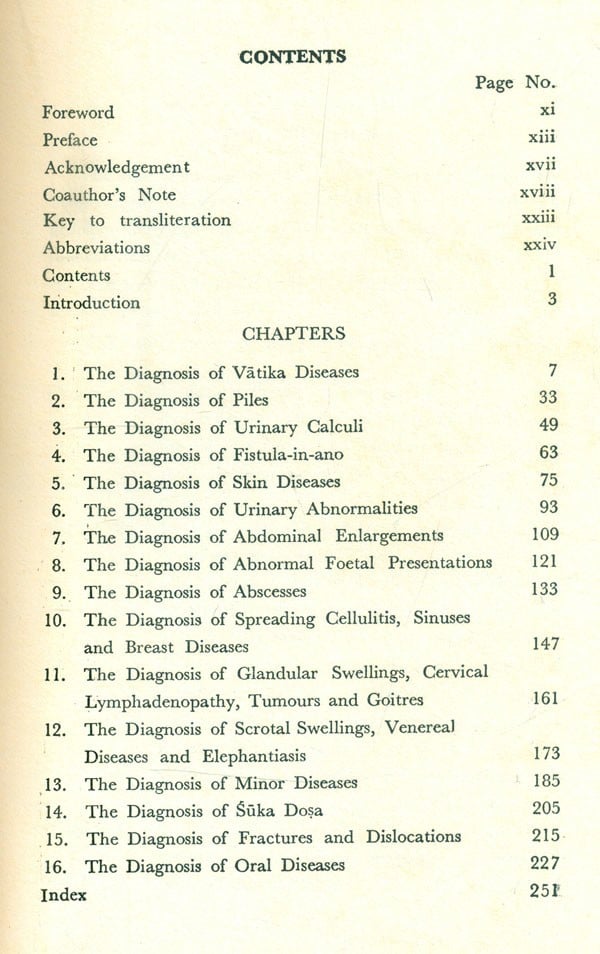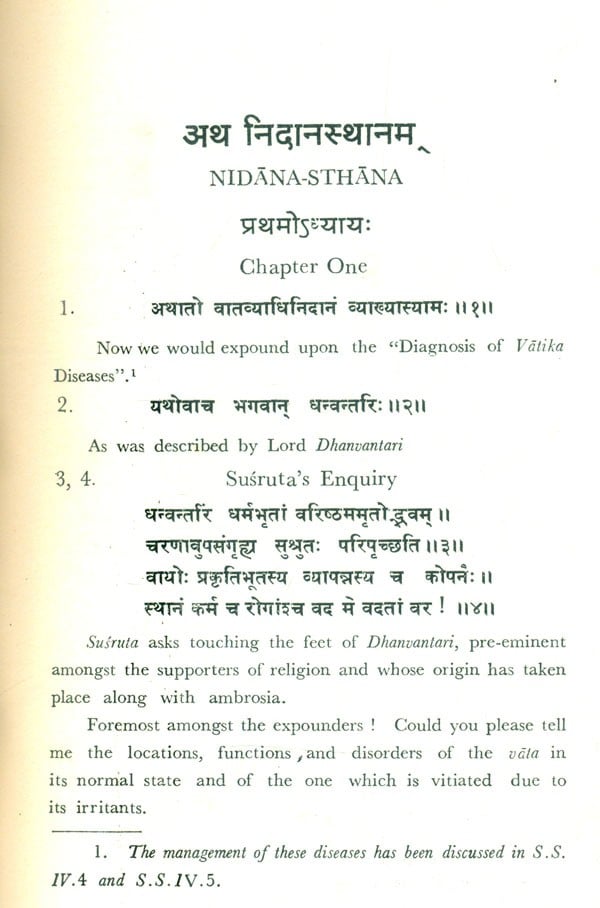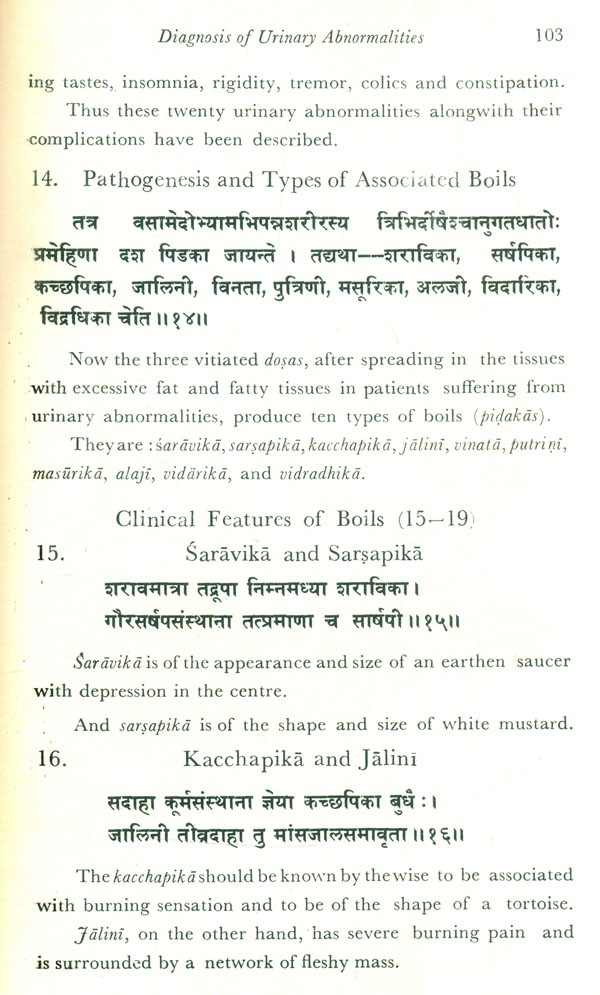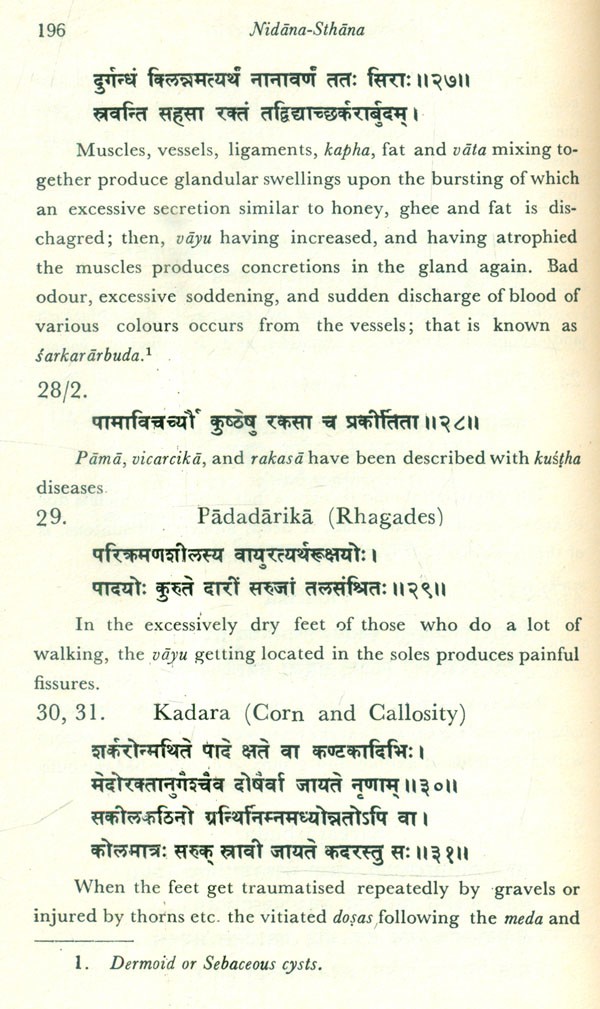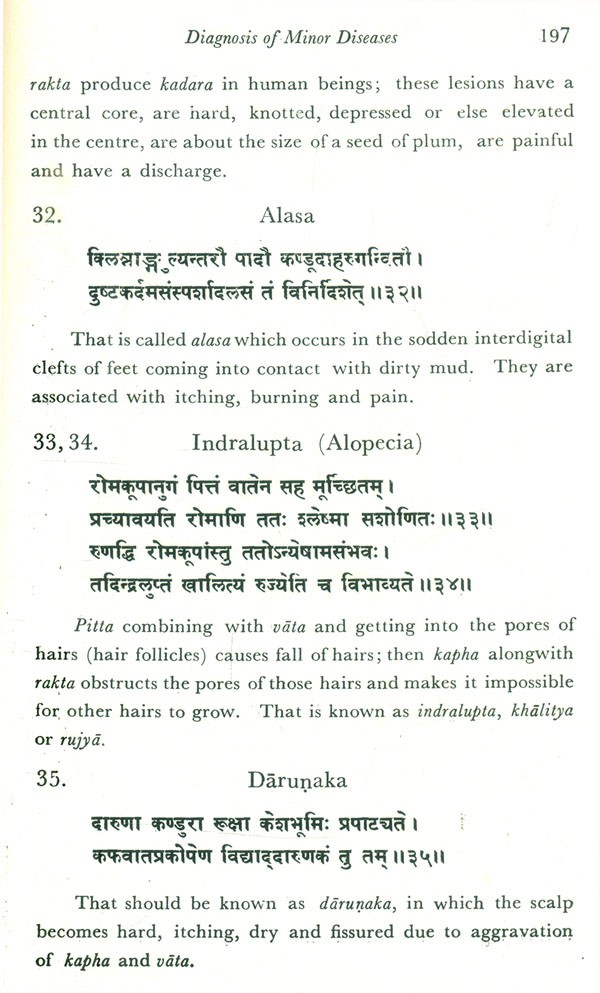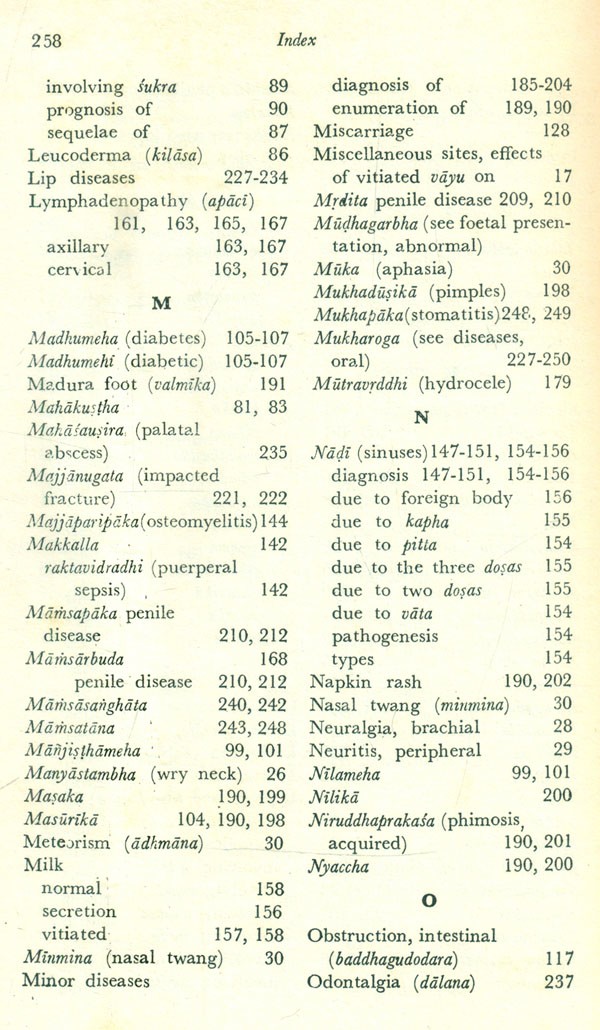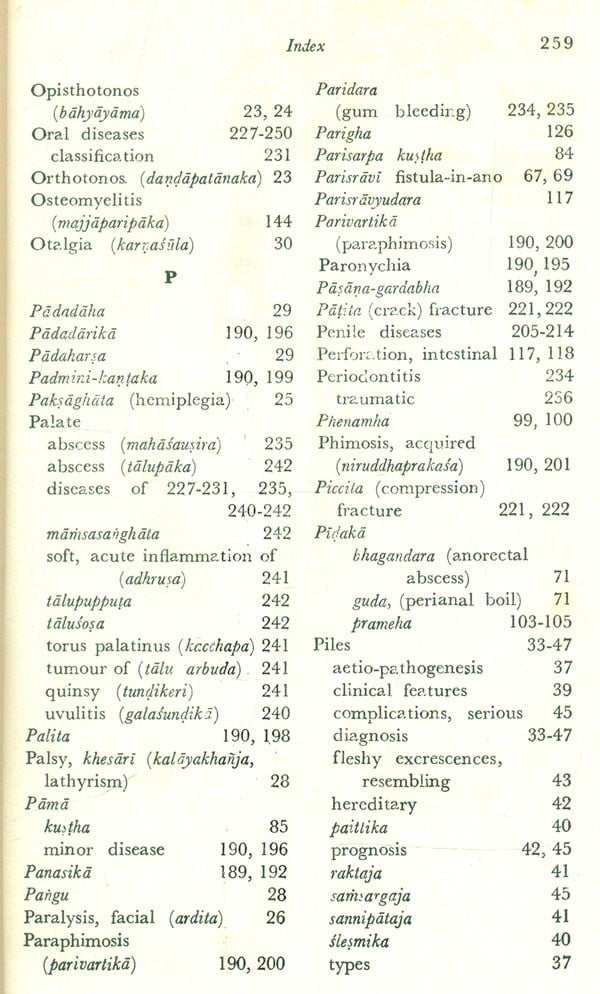
Diagnostic Considerations in Ancient Indian Surgery- Based on Nidana-Sthana of Susruta Samhita: Part-3 (An Old and Rare Book)
Book Specification
| Item Code: | UBE011 |
| Author: | G.D. Singhal |
| Publisher: | Chaukhamba Sanskrit Pratishthan |
| Language: | SANSKRIT TEXT WITH ENGLISH TRANSLATION |
| Edition: | 2006 |
| ISBN: | 8170841571 |
| Pages: | 284 |
| Cover: | HARDCOVER |
| Other Details | 9.00 X 6.00 inch |
| Weight | 400 gm |
Book Description
This lack of knowledge, of course, may lead to affirm things that are not correct, because they have been badly handed down or misinterpreted by the person who referred the content of those ancient texts.
If this deficiency is deplorable in our occidental culture, especially with concern to Greek and Latin works which were not read directly, it may even more easily happen with works of the ancient oriental medicine.
The knowledge of those languages is indeed a rare exception for medical historians of the Occident.
Information on ancient Indian surgery, and in our case the existence of a great treatise of Susruta Samhita, represents acquisitions known to the western historians for having heard of them or thanks to more or less vague. There may also be known passages of some work, but this is not sufficient to affirm to have a thorough knowledge of the complete content of ancient Indian surgery and of the doctrines giving a complete and precise physiognomy of it.
The work completed by Dr. Singhal and his co-workers is indeed praiseworthy: the book which now comes to light is a precious source for the knowledge of the ancient surgery in which Susruta, the best known surgeon of the civilization, remembers the greatness of Ayurveda as far as surgery is concerned.
Ayurveda, the ancient Indian system of medicine, was practiced about 1000 B. C. It is available today in three classical Samhitas or treatises, the Caraca, Susruta and Vagbhata (in addition to many other smaller later publications). All were written in Sanskrit, the age’s old Indian language comparable to the Greek or Latin of the Western World. Caraka and Vagbhata are books mainly on medicine whereas Susruta is chiefly a surgical treatise.
As all these classical treatises have so far been available in Sanskrit only, they have been comparatively less well known to the modern world. A great necessity was felt to bring out the proud possessions of ours accepted as invaluable national treasures using contemporary scientific and medical terminology in a language understandable easily in many other parts of the world. Susruta, the surgical treatise has been to be brought out first.
A great necessity has been felt by the scientists of the modern world, doctors, surgeons, historians, research workers and the educated class of public in general to be able to get to know Susruta-Samhita in the language understandable by them. English written in Roman script was selected as the language for translation as it is one of the international languages.
**Contents and Sample Pages**
